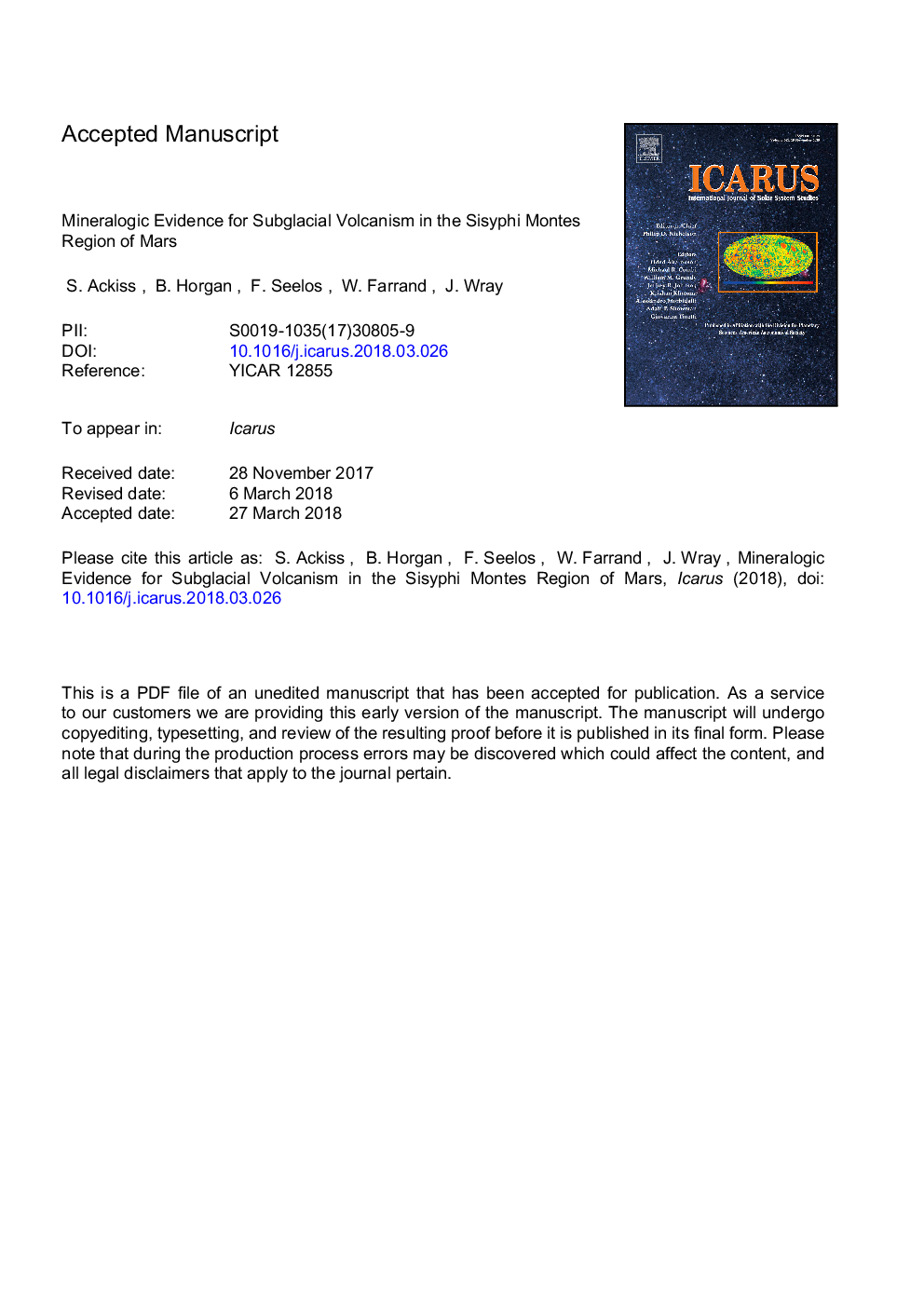| Article ID | Journal | Published Year | Pages | File Type |
|---|---|---|---|---|
| 8134014 | Icarus | 2018 | 50 Pages |
Abstract
Here we examine the mineral assemblages detected on possible glaciovolcanic edifices in the Sisyphi Planum region of Mars, a high-latitude region in the southern highlands nestled between the Argyre and Hellas impact basins. Minerals were identified utilizing visible/near-infrared spectra from the Compact Reconnaissance Imaging Spectrometer for Mars (CRISM). Analysis of eleven CRISM images located on the volcanic edifices revealed three distinct spectral classes in the region which are interpreted to be: gypsum-dominated, smectite-zeolite-iron oxide-dominated (possibly palagonite), and polyhydrated sulfate-dominated material. While sulfates can form under a variety of alteration conditions, palagonite-like mineral assemblages require low-temperature and high water-to-rock hydrothermal conditions typically found in subglacial or subaqueous volcanic eruptions. The possible palagonite detections on the volcanic edifices, the geomorphology of the region, and the analogous terrestrial mineralogy of subglacial eruptions strongly suggests the formation of these minerals during subglacial eruptions or associated hydrothermal systems. This implies that thick water ice sheets were present in this region in the late Noachian or early Hesperian, and that the subglacial hydrothermal systems could have supported habitable environments with excellent biosignature preservation potential.
Related Topics
Physical Sciences and Engineering
Earth and Planetary Sciences
Space and Planetary Science
Authors
S. Ackiss, B. Horgan, F. Seelos, W. Farrand, J. Wray,
